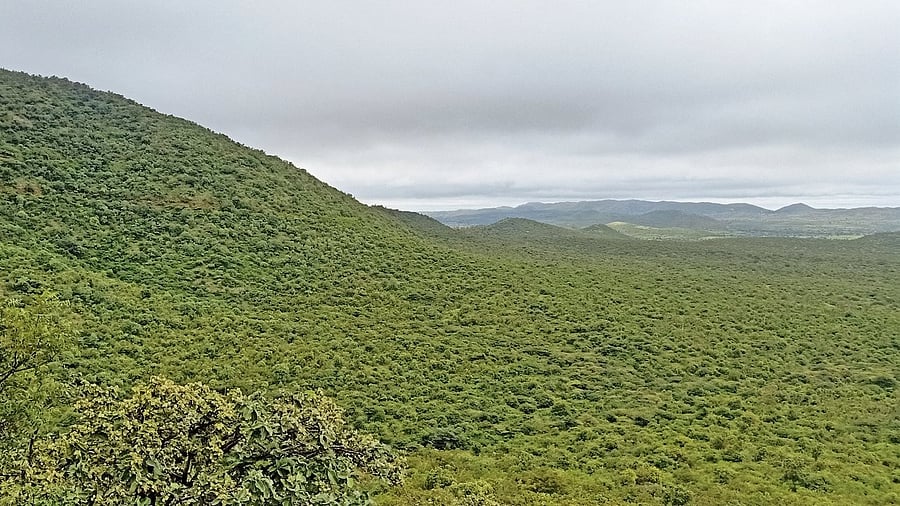
Often referred to as the ‘Western Ghats of North Karnataka’, the Kappatagudda reserve forests host a unique ecosystem that includes over 500 species of rare medicinal plants and diverse fauna, such as leopards, striped hyenas, grey wolves, four-horned antelopes, blackbucks, and bar-headed geese.
Credit: DH Photo
The Union government has issued the final notification declaring the Eco Sensitive Zone (ESZ) around the Kappatagudda Wildlife Sanctuary, marking the culmination of a decade-long movement to protect the ecologically rich region in arid north
Karnataka.
The sanctuary, spread across 244.15 sqkm in Gadag, Mundaragi, Shirahatti, and Laxmeshwar taluks of Gadag district, was officially notified by the Karnataka government in May 2019 following sustained pressure from environmental activists, conservationists, and cultural groups who opposed mining in the region.
Often referred to as the ‘Western Ghats of North Karnataka’, the Kappatagudda reserve forests host a unique ecosystem that includes over 500 species of rare medicinal plants and diverse fauna such as leopards, striped hyenas, grey wolves, four-horned antelopes, blackbucks, and bar-headed geese.
As per the June 4 notification, the ESZ spans 322.695 sq km, covering 298.89 sq km of revenue village area and 23.80 sq km of forest area. A total of 62 villages fall within this zone.
The ESZ extends 1 km to the northeast, east, southeast, and south, and between 1 km and 4.3 km in other directions from the sanctuary boundary.
The notification highlights the ecological threat from both human and climatic pressures. It states, “The Central government hereby notifies an area extending from 1 km to 4.30 km, using cadastral survey numbers as the minimum unit, from the boundary of the Kappatagudda Wildlife Sanctuary as the Eco Sensitive Zone.”
Zonal Master Plan within two years
The government now has two years to prepare a Zonal Master Plan (ZMP) in consultation with local communities. Thirteen state departments, including environment, agriculture, tourism, and revenue, will collaborate on the plan.
The ZMP will not impose restrictions on existing legal land use, infrastructure, or activities unless specifically mentioned. Activities such as road widening, civic amenities, organic farming, and small-scale industries are encouraged.
However, the notification bans commercial mining, quarrying, crushing, oil drilling, and dredging. It also prohibits polluting industries, hydroelectric projects, and the introduction of exotic species.
